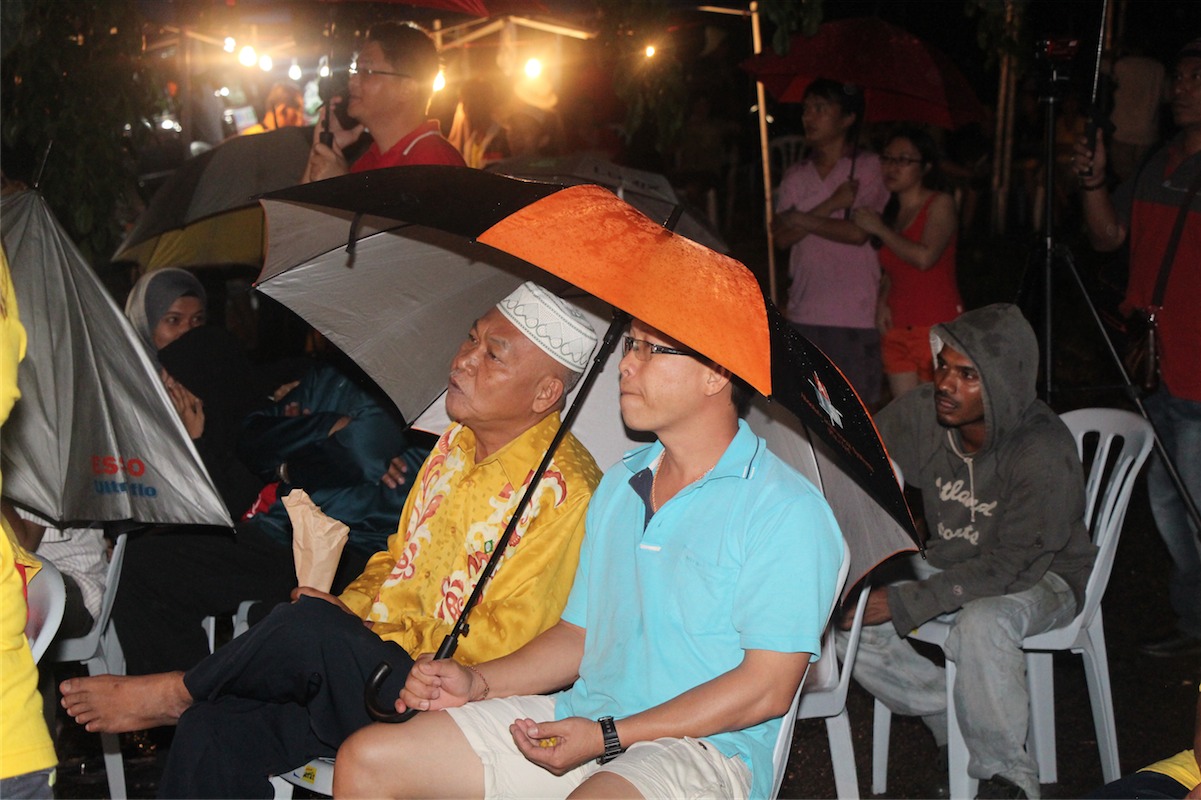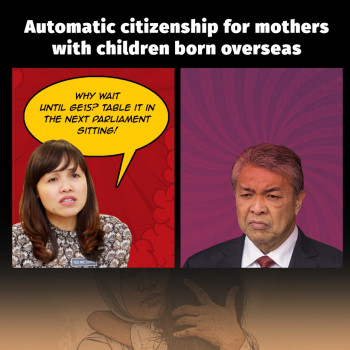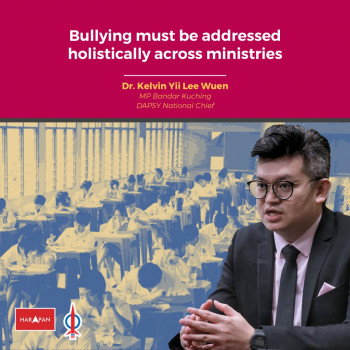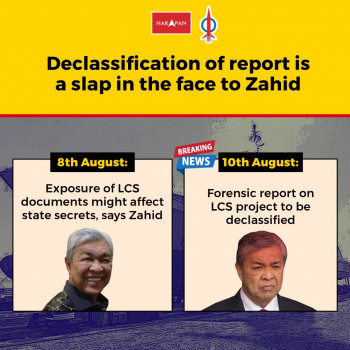By Liew Chin Tong, Kluang MP and DAP National Political Education Director
 I wish to thank Sdr. Tan Hong Pin, DAPSY Johor Chief, and Sdri. Chew Peck Choo, DAP Wanita Johor Chair, and their respective committees for inviting me to speak at the Joint Opening of their respective Conventions.
I wish to thank Sdr. Tan Hong Pin, DAPSY Johor Chief, and Sdri. Chew Peck Choo, DAP Wanita Johor Chair, and their respective committees for inviting me to speak at the Joint Opening of their respective Conventions.
We gather here in Batu Pahat to elect the new committees for DAPSY and DAP Wanita Johor to lead the respective wings for the next three years. But I would like to take this opportunity to offer some ideas with a longer time frame for us to ponder upon.
Let us imagine how DAP would be like in 2025, 10 years down the road.
Ten years ago, in 2004, when Sdr. Lim Guan Eng become the Secretary-General, the DAP was seen as a “permanent opposition party” with no chance of forming government at any level, and that an opposition coalition was next to impossible after the collapse of Barisan Alternatif in September 2001.
But in the last decade, we witnessed what was previously impossible suddenly becoming the new normal. From one of the opposition’s worst defeats in 2004, we went to hell and back by denying Barisan Nasional’s two-thirds majority and forming five state governments in 2008. And in 2013, Pakatan barely missed the chance to form the federal government by a whisker.
A decade is a long time in politics yet a decade is not too long for a nation’s history.
While on the one hand we may err by being too optimistic and idealistic about the future, on the other hand we do not wish to err by being too conservative about our own future potential that we miss the boat of great societal change just because we thought it was not possible.
I would like to ask three questions about the future, about DAP in 2025, as food for thought. We need to cast our vision clear so that we can work backward and know exactly what needs to be done step by step in the next ten years.
First, is DAP prepared to have half of its membership consisting of Malays in 2025 and work towards that objective?
DAP members can still take pride in a party that strives to be the most Malaysian party in terms of leadership and elected reps. Only Parti Keadilan Rakyat and DAP can claim to have all the key ethnic and geographical groups represented in the party structure and as well as among elected reps at the national level. Geographically, DAP is the first party to have branches in all states of Malaysia.
The DAP was once forced into a corner and gaining only the support among the Chinese educated. And in the 1999 election, even the Chinese educated deserted the DAP. But by around 2007, the DAP expanded its ground beyond the Chinese educated and was seen as the party of choice for ethnic Indians and English educated Chinese.
Since the 2008 general election, through the tireless efforts of Sdr. Lim Kit Siang and our comrades in Sabah and Sarawak, DAP is now seen to be a force to be reckoned with in the previous so – called fixed deposit states of Barisan Nasional. The upcoming Sarawak state election will be a major test for us and I hope all Johor comrades will take part in the battle.
The DAP has never wished to be “boxed-in” as a party that represents only a certain group. Our ambition from the day the party was formed on 18th March 1966 is to be the party of choice for all Malaysians who aspire to see a nation that provides hope and opportunities for all Malaysians and not for a selected few.
Our challenge is whether we are prepared to see a DAP that has Malays forming half of its membership sharing the ideals of a democratic Malaysia. The final hurdle of Malaysian politics is UMNO’s race politics and the DAP is used as the bogeyman for UMNO’s survival.
If DAP is the party of choice for young Malays too, that would be the end of UMNO.
Second, is DAPSY prepared to lower its age limit further to 30 years old instead of 35.
I commend the former DAPSY chief Sdr. Loke Siew Fook for leading the change for DAPSY to reduce its age limit to 35 years old in 2012. The DAP was then the first party to have done so.
Recently, UMNO Youth Chief Khairy Jamaluddin who is also Youth and Sports Minister announced that from 2018 onwards all youth organisations will have its age limit reduced from 40 to 30 years old.
I would like to welcome the move but also call on Khairy to set the example by first imposing this on to UMNO Youth so that UMNO Youth’s age limit is at 30 years old.
From the speeches by Umno Youth leaders at its recent assembly, it is clear that UMNO leaders and members are amazed by DAP and felt let down by their own party and leaders: that the DAP has youth power!
Six of the 20 DAP elected CEC members were born after 1970 and another two, Sdri. Teo Nie Ching and Sdr. Zairil Khir Johari were born after 1980. Of the 37 federal MPs from the DAP, four were born after 1980. Of the 104 state assemblymen, 21 of them were born after 1980. 5 out of 13 DAP Johor State Assemblypersons were born after 1980.
With the proposed constitutional amendment at next week’s National Conference, the number of elected central committee members will be increased from 20 to 30 persons which is likely to mean that more young leaders would be elected into the top decision making body of the party in the future.
Unlike in other parties, the DAP provides opportunities for the youth to lead from the core and not peripheral.
As such, perhaps given a ten-year horizon, we can envisage DAPSY as the training ground for those from 17 years old to 30 years old whereas those above 30 years old would have sufficient room to perform at the top leadership level directly.
I know that it is not easy at the practical level for now. But if we believe that the strength of the DAP is our ability to set the trends and agendas for other parties to follow, this is an area that I think we should lead!
Third, will we have 50% female membership and leadership by 2025? And can we envisage that that no longer need a Wanita wing anymore?
I hope that in the next ten years, DAP Wanita works towards expanding women power within the party so that there is no need for a Wanita wing anymore.
In the constitutional amendment at next week’s National Conference, it is proposed that there will be a 30% female quota for elected Central Executive Committee members. Again, the DAP leads. We are the first Malaysian party to have done so.
But I would like to pose this challenge to DAP Wanita. Can we make the DAP the party of choice for women of all ethnic and religious backgrounds? And will there be a movement to bring women into mainstream politics?
In the next years, can the DAP Wanita lead the way to create a wave so that women join DAP and lead the party from the front, not just from the Wanita wing so that one day we have parity of both genders at the leadership level, not just 30%, and that when such day comes, there is no more need for a Wanita wing.
I know these may sound far-fetched for many. But the world is ruled by ideas and very little else. It is ideas and ideals that sustain us and move the DAP forward.
I wish you a good convention.



